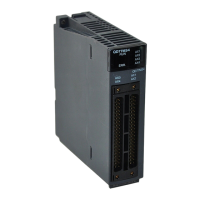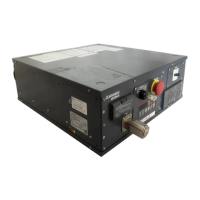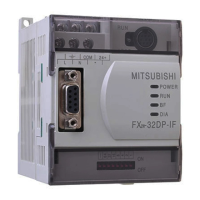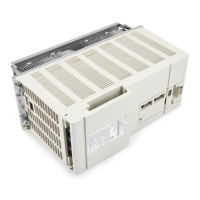3 - 86 3 - 86
MELSEC-Q
3 SPECIFICATIONS
3.5.52 Execution times monitor (buffer memory address 258, 514: Un\G258, Un\G514)
(1) Execution times of the currently executed program pattern are stored.
(2) Execution times are updated at the pattern end.
When the program pattern is linked, they are updated at the pattern end of the
final program pattern.
(3) Upper limit of the storage value is 30000. Bigger than this, the monitor goes back
to 0 and starts to count again.
3.5.53 Pattern end output flag (buffer memory address 259, 515: Un\G259, Un\G515)
(1) This flag confirms the pattern end output status at the completion of the program
control of the final segment.
• Pattern end output OFF: 0 is stored.
• During pattern end output: 1 is stored.
3.5.54 End status flag (buffer memory address 260, 516: Un\G260, Un\G516)
(1) This is the flag to notify the completion of the program control.
(2) This flag is turned on (the stored value is 1) at the completion of the program
control.
When turned on, this flag is kept ON until the program control is executed again
(set 1 to (the program control RUN/RESET) (buffer memory address: 57, 89)).
3.5.55 Wait status flag (buffer memory address 261, 517: Un\G261, Un\G517)
(1) This is the flag to confirm the wait status of the program control.
• Canceling wait status: 0 is stored.
• Wait status: 1 is stored.
3.5.56 Hold status flag (buffer memory address 262, 518: Un\G262, Un\G518)
(1) This is the flag to confirm if the program control is in hold status.
(2) This flag will be 1 when the program control is in hold status by a hold command
(buffer memory address: 201, 217).
• Cancel hold status: 0 is stored.
• In hold status: 1 is stored.
3.5.57 Advancing completion flag (buffer memory address 263, 519: Un\G263, Un\G519)
(1) This flag confirms if the advancing operation by the command advancing (buffer
memory address: 202, 218) is completed in the program control.
• Advancing operation uncompleted, or no command: 0 (default value) is stored.
• Advancing operation completed : 1 is stored.
(2) This flag is reset to 0 by turning off the command advancing.
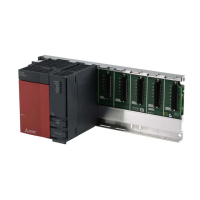
